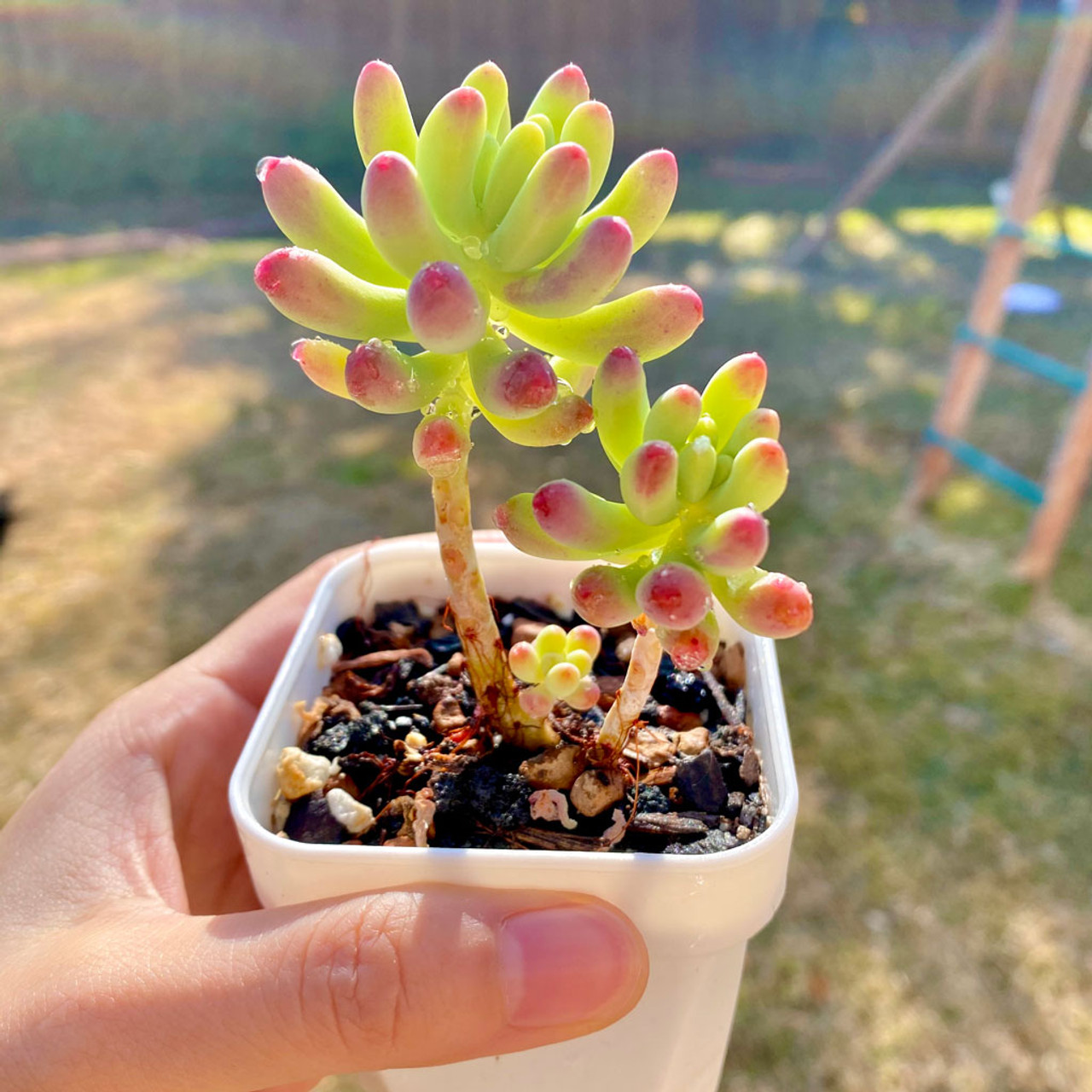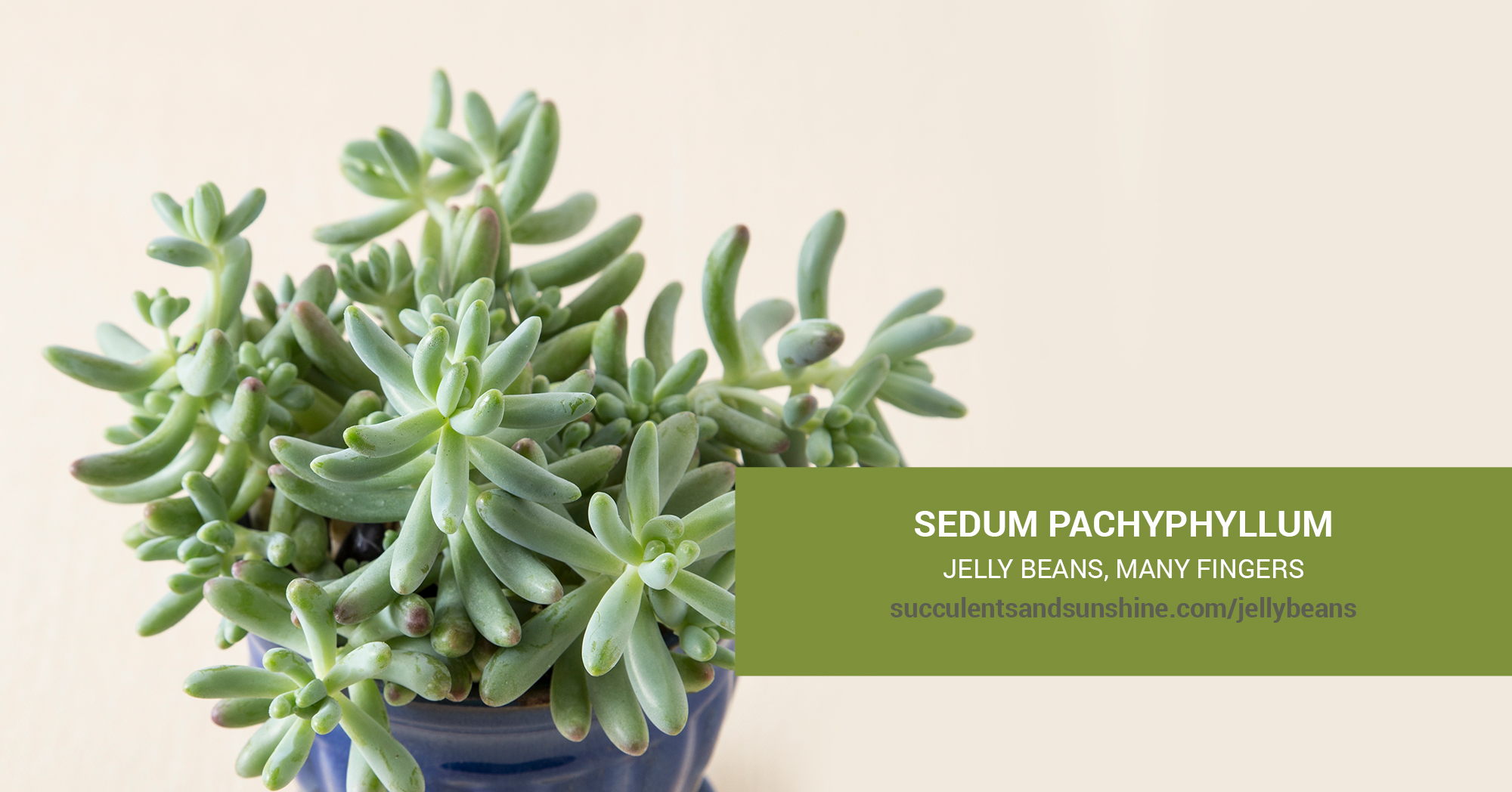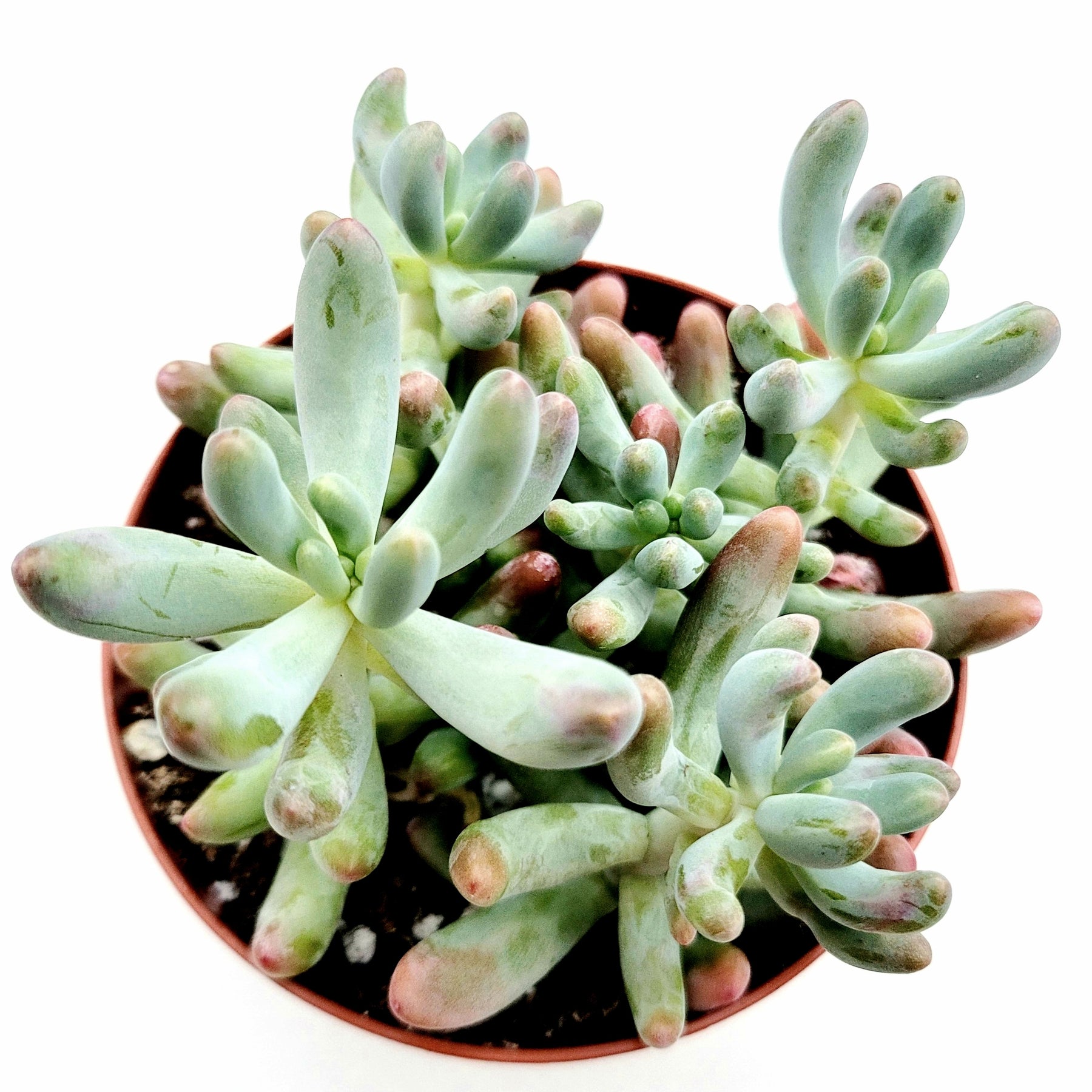This Sedum, with its silver-hued foliage and thick leaves, makes an excellent ground cover once it starts to trail. Its woody stem adds a bit of texture and in the summer, it produces yellow flowers to boot.
Table of Contents
Care and Propagation Information
Sedum pachyphyllum is an ideal choice for succulent arrangements with its growing capabilities as a “thriller” and its ability to trail as a “spiller,” making it perfect for hanging baskets or rock gardens.
Watering
Sedum pachyphyllum should be watered using the “soak and dry” method, in which the soil is allowed to dry out completely before being watered again. This is the standard way of watering succulents such as this one.
Where to Plant
“Jelly Beans” is not frost tolerant, so if you live in an area where temperatures drop below 20° F (-6.7° C), it is best to grow this succulent in a pot that can be brought indoors during cold weather. This plant thrives in direct or indirect sunlight.
How to Propagate Sedum pachyphyllum “Jelly Beans”
Jelly Beans have a high rate of dispersal through propagation from leaves.
Leaves
To ensure successful propagation, carefully twist the leaf from the stem while taking it for propagation. Make sure that the leaf is pulled off cleanly, with no remaining parts on the stem.
It is not unusual for Sedum pachyphyllum to shed its leaves. This should not be mistaken for a sign of over-watering. It is possible to gather the dropped leaves and successfully propagate them.
Wait for the leaf to dry and form a protective layer for a couple of days before putting it in soil that drains well.
Cuttings
To propagate “Jelly Beans” through cuttings, utilize a clean, sharp knife or scissors. Cut a stem from the original plant, and allow the cut to heal over a few days. Place the cutting in a soil mix that drains well and keep the soil moist by watering when it has dried out completely.
Care and Propagation Information
General Care for Sedum pachyphyllum “Jelly Beans”
Watering
Sedum pachyphyllum should be watered using the “soak and dry” method, in which the soil is allowed to dry out completely before being watered again. This is the standard way of watering succulents such as this one.
Where to Plant
“Jelly Beans” is not frost tolerant, so if you live in an area where temperatures drop below 20° F (-6.7° C), it is best to grow this succulent in a pot that can be brought indoors during cold weather. This plant thrives in direct or indirect sunlight.
How to Propagate Sedum pachyphyllum “Jelly Beans”
Jelly Beans have a high rate of dispersal through propagation from leaves.
Leaves
To ensure successful propagation, carefully twist the leaf from the stem while taking it for propagation. Make sure that the leaf is pulled off cleanly, with no remaining parts on the stem.
It is not unusual for Sedum pachyphyllum to shed its leaves. This should not be mistaken for a sign of over-watering. It is possible to gather the dropped leaves and successfully propagate them.
Wait for the leaf to dry and form a protective layer for a couple of days before putting it in soil that drains well.
Cuttings
To propagate “Jelly Beans” through cuttings, utilize a clean, sharp knife or scissors. Cut a stem from the original plant, and allow the cut to heal over a few days. Place the cutting in a soil mix that drains well and keep the soil moist by watering when it has dried out completely.
FAQ
Should I trim my jelly bean plant?
Jelly bean succulents are a perfect choice for novice gardeners since they can survive with minimal care. They don’t need to be watered often, they don’t require trimming or repotting regularly, and they are simple to propagate.
How do you take care of jelly bean succulents?
Jelly bean succulents are able to endure long droughts with minimal water. When grown indoors, it is necessary to let the soil dry out completely between waterings. To ensure the plant is ready for moisture, wait for the leaves of the jelly bean succulent to have a ‘puckered’ look.
Are jelly bean succulents Hardy?
Most jelly bean succulents require at least six hours of sunlight daily, but they are also capable of surviving in dry, extreme weather conditions. However, they cannot tolerate cold temperatures, and will perish or be severely harmed if exposed to cold weather.
How tall does jelly bean succulent get?
7 to 8 inches in height
How do you care for Sedum jellybeans?
If you want your Sedum Jelly Bean to keep its vibrant hue, put it in a spot where it can get at least 6 hours of sunlight daily. Alternatively, you can place the plant in a partly shaded area with a few hours of sun exposure to give it a colorful look.



